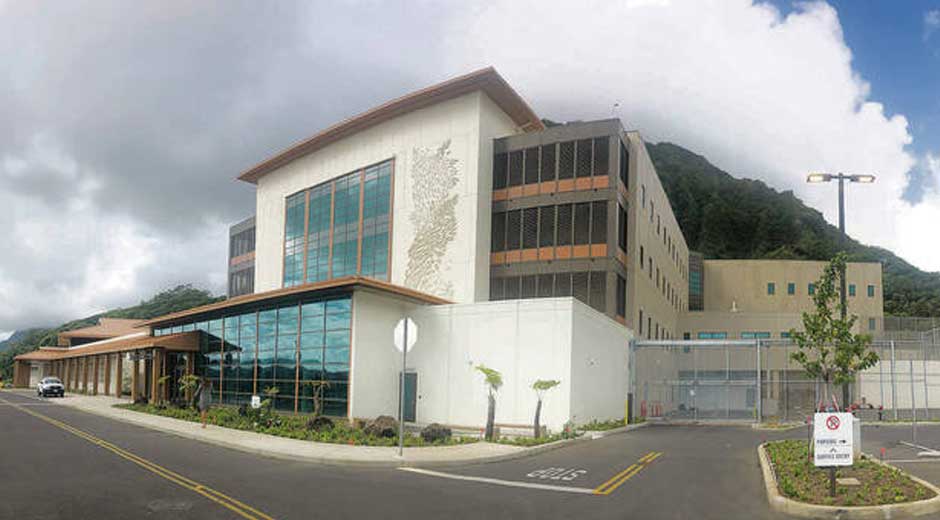Psychiatric Services Hawaii: An Overview

Hawaiʻi faces unique challenges and opportunities in delivering psychiatric and mental health services. While the islands are known for natural beauty and a strong sense of community, geographic isolation, cultural diversity, and resource constraints create a complex landscape for mental health care. Psychiatric services in Hawaiʻi also serve the broader Pacific Rim region, connecting the islands to a wider network of care. Below is a synthesized overview of the current state of psychiatric services in Hawaiʻi, including strengths, gaps, and prospects for improvement.
Services are tailored to each person’s unique needs, considering their cultural, biological, and psychological background. The current state of psychiatric services includes a range of evidence-based treatments, such as psychotherapy, dialectical behavior therapy, and medicine, to address diverse mental health needs.
The Need: Mental Health in Hawaiʻi
Prevalence and Unmet Needs
- About 8 % of adults in Hawaiʻireport having ever been diagnosed with a depressive disorder.
- In a 2021 survey, 6 % of adultsreported symptoms of anxiety or depression, and 17.9 % said they were unable to access needed counseling or therapy. namihawaii.org
- According to a UHERO (University of Hawaiʻi Economic Research Organization) survey, nearly 40 % of young adultsreported being unable to access mental health care.
- A sobering statistic: 69 % of Hawaiʻi adultswho needed mental health care reported that they could not get treatment.
- Especially striking is the disparity for those living on the Neighbor Islands: only 8 % of decedentswith a mental health diagnosis were receiving treatment, compared to 40 % on Oʻahu.
These numbers reveal both a demand for mental health services and serious gaps in access, especially outside of Oʻahu.
Disparities and Cultural Factors
- Native Hawaiian and Pacific Islander populations are significantly less likely to access mental health services or receive prescription medications — for example, Indigenous groups were 70 % less likely to receive such treatment.
- Cultural stigma, lack of culturally attuned providers, and geographic isolation often discourage or prevent individuals from seeking care.
Structure & Providers of Psychiatric Services in Hawaiʻi
State Agencies & Framework
- The Adult Mental Health Division (AMHD)under the Hawaiʻi State Department of Health is the lead agency for adult psychiatric services.
- AMHD operates through Hawaiʻi State Hospital, Community Mental Health Centers (CMHCs), and contracted providers (purchase-of-service).
- For children and adolescents, the Child & Adolescent Mental Health Division (CAMHD)ensures early access to services, emphasizing family-focused and least restrictive care.
- Crisis access is managed through Hawaiʻi CARES 988, which offers 24/7 support via call, text, or chat.
- Local community organizations such as NAMI Hawaiʻiprovide free support, education, and advocacy.
Clinical & Hospital-Based Service Providers
- SynCare Behavioral Health
Located in Honolulu, SynCare Behavioral Health provides compassionate, evidence-based psychiatric care for adults and adolescents across Hawaiʻi. The clinic offers both in-person and telehealth appointments, making it accessible to patients on Neighbor Islands as well as those on Oʻahu.
Led by a Board-Certified Psychiatric-Mental Health Nurse Practitioner, SynCare specializes in psychiatric evaluation, medication management, and ongoing treatment for conditions such as depression, anxiety, bipolar disorder, PTSD, ADHD, and sleep disorders.
Their approach emphasizes personalized treatment, confidential care, and continuity between provider and patient, ensuring that individuals receive ongoing support tailored to their needs. By combining clinical expertise with a local understanding of Hawaiʻi’s cultural context, SynCare bridges a critical gap for patients seeking modern and convenient psychiatric services in the islands.
- UH Department of Psychiatry
The largest psychiatric services provider in Hawaiʻi, offering emergency, inpatient, outpatient, day treatment, and consult liaison services in partnership with Queen’s Medical Center. Psychology professionals contribute to psychological testing, therapy, and behavior modification as part of a holistic approach.
- Hawaiʻi Pacific Health
Offers mental and behavioral health services across multiple hospitals (Kapiolani, Pali Momi, Straub, Wilcox), treating mood disorders, anxiety, serious mental illness, etc.
- Hawaiʻi Island Community Health Center
Offers behavioral health counseling, substance use treatment, crisis support, co-locations with primary care, etc. Substance abuse treatment is integrated with other mental health and recovery services to provide comprehensive care.
Training and Workforce Development
- The Hawaiʻi Behavioral Health Training Institute (HBHTI)educates and supports behavioral health professionals, particularly in substance use counseling.
- Ongoing training in culturally responsive care is increasingly emphasized because of Hawaiʻi’s ethnic diversity and unique cultural needs.
Services for Children and Adolescents
At The Queen’s Medical Center, we recognize that the mental health journey for children and adolescents requires specialized, compassionate care. Our dedicated team of board-certified psychiatrists, psychologists, and mental health professionals is committed to providing comprehensive psychiatric care that supports the unique needs of young people and their families across the Hawaiian Islands.
We offer a full spectrum of behavioral health services for children and adolescents, including individual, family, and group therapy, as well as medication management and psychological testing. Our evidence-based treatment programs address a wide range of mental health conditions, such as anxiety, depression, attention deficit hyperactivity disorder (ADHD), trauma, substance use disorders, and serious mental illness. By focusing on mental wellness, skill building, and emotional well-being, we help our patients develop the tools they need to thrive at home, in school, and in the community.
Care coordination is at the heart of our approach. We work closely with families, schools, and community organizations to create a supportive environment that fosters healing and growth. Our team understands the importance of involving families in the treatment process and providing education and support every step of the way.
The Queen’s Medical Center accepts referrals from physicians, therapists, and other healthcare providers, as well as self-referrals from families and individuals. We are committed to making our services accessible to all children and adolescents in Hawaii, including those experiencing personal, emotional, or social difficulties. For those facing a mental health crisis, our emergency services are available 24/7 to provide immediate support and care.
In addition to crisis intervention, we offer outpatient counseling and therapy to support ongoing mental health care. Our programs are designed to meet the diverse needs of our patients, including those with substance use disorders, trauma, and other complex mental health conditions. Every treatment plan is tailored to the individual, ensuring that each child or adolescent receives evidence-based psychiatric care that is right for them.
At The Queen’s Medical Center, we are dedicated to supporting the mental health and well-being of children, adolescents, and their families throughout Hawaii. Our compassionate team is here to help guide you through the healing process and provide the support you need. If you would like to learn more about our services or schedule an appointment, please call us today.
Strengths & Innovations
- Crisis Line / 988 Implementation: Hawaiʻi has adopted the 988 system early, providing a unified, accessible point for mental health crisis support statewide.
- Integration of Mental Health & Primary Care: Some community health centers co-locate behavioral health services with primary care to lower barriers.
- Telehealth & Remote Services: Given the geographic challenges of islands and rural areas, telepsychiatry is emerging as a key tool to expand reach (especially on neighbor islands).
- Community-led & Culturally Adapted Programs: Initiatives like peer support, “Spill the Tea Café” (for adolescents), and outdoor therapeutic practices aim to reduce stigma and engage youth in more accessible ways.
- Legislative Efforts for Diversion Programs: Laws like Act 26 (which aim to divert individuals with mental illness from incarceration) attempt to shift treatment out of penal systems and into therapeutic settings.
Challenges & Gaps
- Provider Shortages
- The ratio of mental health providers per population is variable across counties; many neighbor islands face critical shortages.
- High cost of housing and living in Hawaiʻi makes it difficult to recruit and retain psychiatrists and mental health specialists in rural and outer-island areas.
- Long Wait Times & Barriers to Access
- Waitlists of 1 to 6 monthsfor therapists or psychiatrists are not uncommon.
- Many people on neighbor islands or less populated regions must travel to Oʻahu or larger facilities for specialty care.
- Financial, transportation, and insurance barriers often deter use of services.
- Under-treatment & Disparities
- The high rates of unmet need and treatment gaps disproportionately affect low income, rural, and Native Hawaiian / Pacific Islander communities.
- Cultural stigma remains a persistent barrier to seeking mental health care, particularly within communities that emphasize self-reliance, spiritual coping, or alternative healing.
- Crisis & Forensic System Strain
- The state hospital often operates beyond capacity, in part due to the revolving use of psychiatric evaluations and short-term stays under legal diversion laws.
- Some individuals repeatedly cycle between jails, hospitals, and homelessness without stable, sustained care because of gaps in community-based support.
- Post-disaster Mental Health Needs
- Events like wildfires (e.g. the 2023 Lahaina fires) have exacerbated trauma, grief, and stress among youth and families.
- After disasters, the demand for mental health services spikes, but capacity and resources often lag behind.
Strategies & Opportunities for Improvement
- Expand Telepsychiatry & Mobile Clinics: Reach underserved areas more effectively, reducing travel burdens and access gaps.
- Loan Forgiveness & Incentives for Providers: Encourage mental health professionals to practice in rural and neighbor island areas via financial incentives.
- Strengthen Community Partnerships: Collaborate with cultural leaders, churches, schools, and grassroots groups to build trust, reduce stigma, and promote early help-seeking.
- Improve Care Coordination: Better link crisis services, outpatient providers, law enforcement, and housing support to reduce fragmentation and “revolving door” cycles.
- Invest in Workforce Development: Expand training for paraprofessionals, peer support specialists, and culturally competent practitioners.
- Focus on Trauma-informed & Resilience-based Care: Particularly in the aftermath of disasters, integrating trauma-responsive frameworks is key.
- Policy & Funding Reform: Enhance funding for community-based services, oversight of diversion laws, and long-term care planning.
Psychiatric services in Hawaiʻi sit at a critical juncture. There is undeniable need: many individuals across the islands experience mental health challenges, but too many remain untreated or underserved. Despite committed public agencies, hospital systems, nonprofit organizations, and creative local initiatives, the system is stretched thin.
Addressing these gaps will require coordinated efforts: expanding access (especially off-Oʻahu), recruiting and retaining therapists and psychiatrists, reducing stigma in underserved communities, and building sustainable, culturally grounded services. Hawaiʻi’s unique geography and cultural diversity demand solutions that are as distinctive as the islands themselves.
If you’d like, I can also write a version focused on a specific island (e.g. Hawaiʻi Island, Maui, Kauaʻi) or a guide for how individuals can access psychiatric care—would you like me to do that?


